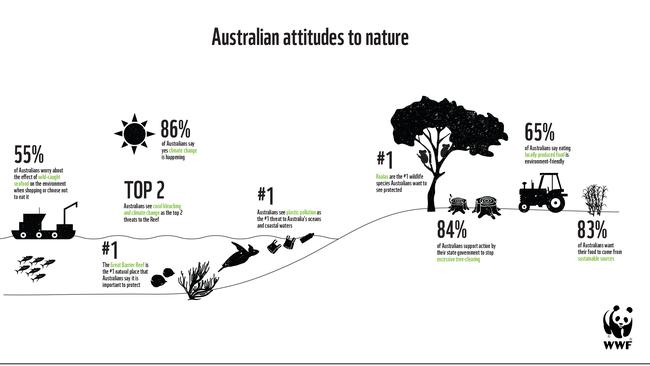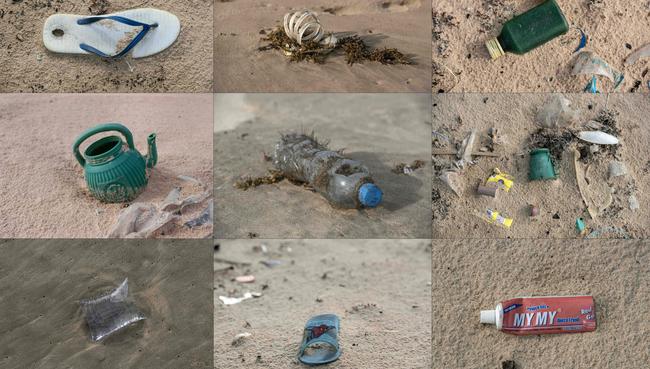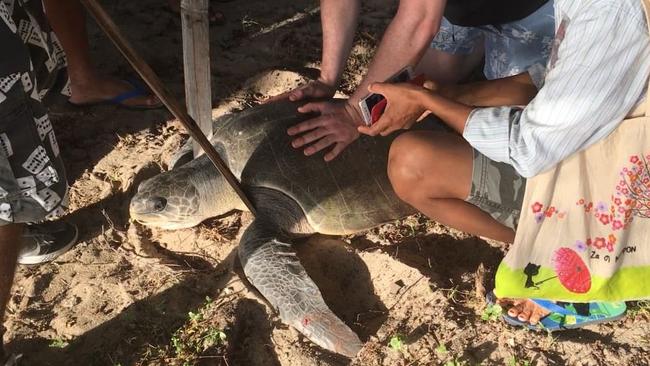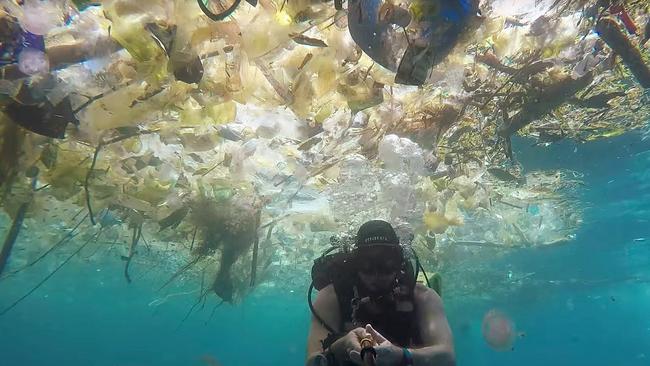Alarming plastic statistics released this week will shock you
IF AUSSIES lined up all the coffee cups and plastic bags they use they would stretch all the way to the moon more than three times over. So which products are the worst culprits?
News
Don't miss out on the headlines from News. Followed categories will be added to My News.
THEY’RE the everyday items we’re all guilty of using for convenience.
But have your ever thought about the most common plastics you’re using, which are the worst, and how you can avoid them?
This week we get a double whammy of plastic awareness, with World Environment Day today and World Oceans Day on Thursday.
New research shows Aussie discard more than 9.7 billion pieces of single-use plastic each year.
Our coffee cups and plastic bag waste alone lined up end to end would extend a whopping 1.47 million kilometres — enough to stretch to the moon more than three times.
Our alarming use of the main culprits — coffee cups, plastic bags, straws and single-use bottles — outweighs the population by 400 per cent.
About eight million tonnes of plastic waste is dumped into the ocean each year, equating to 1580kg ending up in Australia’s oceans every hour.
Compared to our neighbours across the ditch, New Zealanders are more single-use plastic conscious and use fewer disposable coffee cups, plastic bags and bottles.
But their plastic straw consumption was alarmingly close to Australia’s with only 20 fewer straws used on average, per person each year.
Statistics from Sea Life show Millennials are the biggest plastic offenders, followed by Generation X and then Baby Boomers, with all supportive of a ban on plastic bags and straws.
Over the weekend it was reported that a small male pilot whale died in southern Thailand after swallowing more than 80 plastic bags. It follows a similar story earlier in the year when Spanish officials found a dead juvenile sperm whale that washed ashore with nearly 30kg of plastic in its stomach.
New research from Corona also reveals that three quarters of Aussies underestimate or have no idea about how much plastic is entering Australia’s oceans hourly. The good news is that 89 per cent said they’d make an effort to reduce plastic consumption.
The World Wildlife Fund has released simple tips for reducing your environmental footprint, including minimising plastic use.
The organisation says you can do this by switching to reusable shopping bags and coffee cups, and avoid using plastic plates, utensils and straws, while also preparing your own food at home and using reusable containers.
MORE: Australia’s massive scale of food waste in confronting campaign
MORE: National Geographic plastic cover ‘one for the ages’


SO WHAT ARE THE WORST PLASTICS?
PLASTIC BAGS
NSW, Victoria and Western Australia are leading the way with plastic bag use, grabbing a whopping 3.3 billion bags per year.
Head of Sea Life Trust Australia and New Zealand Claudette Rechtorik said ignorance was not bliss when it came to our plastic consumption.
“Unfortunately, single-use plastic is one of biggest threats to the environment and marine life, with many single-use plastic items ending up in our ocean,” she said.
“Sea turtles for example, often mistake plastic bags for jellyfish so it’s important for Australians to be aware that the way they use and discard plastic today will impact our oceans for generations.”
With supermarkets around the country preparing to phase out single-use plastic bags later this month, shoppers will need to start taking their own bags anyway.

COFFEE CUPS AND LIDS
Coming in second for plastic use, Australia’s coffee addiction has taken us around the globe a staggering seven times — with more than 2.6 billion coffee cups thrown into waste each year.
It’s important to remember coffee cups can’t be recycled.
Many cafes now offer discounts of up to 50 cents to customers who bring their own cup, except for some who are still reluctant to get on board.
STRAWS
Straws are one of the biggest problems for marine waste because of the damage they can do if animals eat them.
In Australia, 2.47 billion straws end up in landfill.
The statistic has prompted Woolworths to phase out the sale of plastic straws by the end of the year, with the change removing 134 million plastic straws from circulation annually.
SINGLE-USE BOTTLES
We’re sending 1.3 billion bottles to landfill and each one can take up to 450 years to breakdown.
Australians have been estimated to spend $385 million each year on bottled water — something they can get from a tap.
OTHER PLASTICS TO WATCH OUT FOR
If we were to follow the European Union’s ban on their 10 most common single-use plastics we’d also have to be wary of balloons and their sticks, chip packets, cigarette butts, food containers, cutlery, cotton buds and sanitary products.
About 20 billion tampons and pads are being dumped into landfill each year.
The polyethylene plastic in pads can take hundreds of years to decompose and one packet can contain the equivalent of about four plastic bags.



